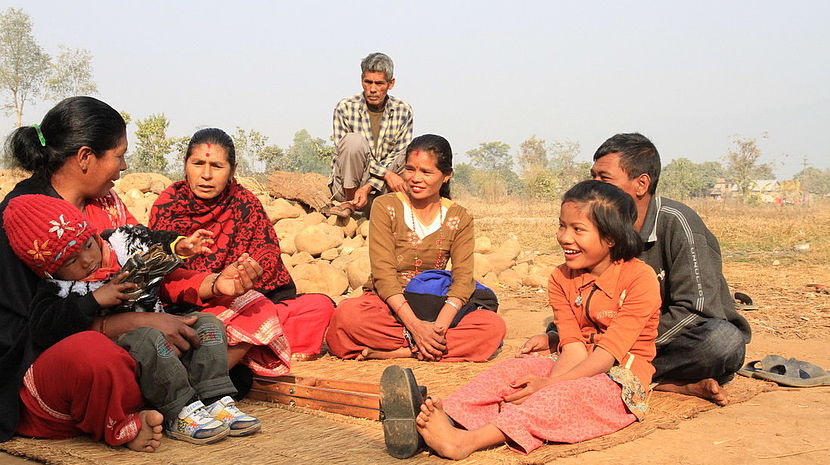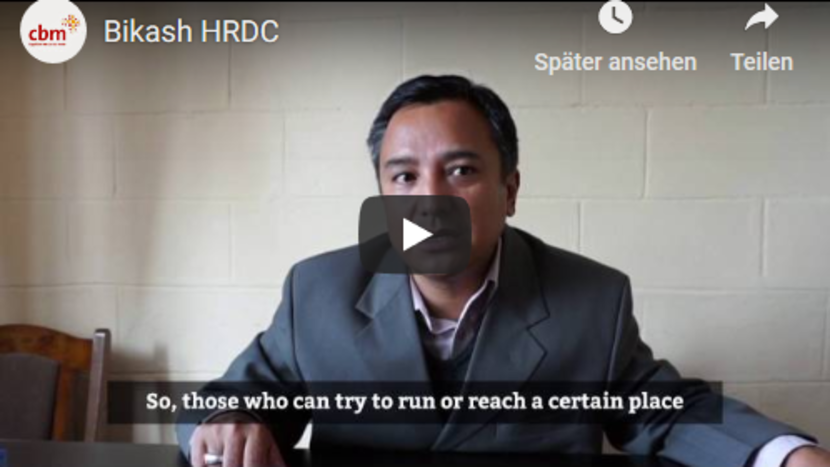Nepal earthquake - one year on

Since the earthquake that hit Nepal on 25 April 2015, CBM, with partner organisations, has been working to ensure that everyone in the affected communities - including persons with disabilities - benefits from and participates in relief and recovery work. One year on, we have reached more than 25,000 people in the worst-hit districts.
Our strategy has been to provide access to medical and psychosocial rehabilitation and support, and to ensure that mainstream relief is disability-inclusive. In this process, we have been using the knowledge and resources of Nepalese Disabled People's Organisations (DPOs), and working in close cooperation with other humanitarian agencies through the coordination mechanisms set up in the country.
To ensure that the transition into long-term rehabilitation is smooth, that gaps are filled and that the recovery work is in harmony with ongoing development work, we have projects planned for the next two to three years. These have been designed not only to create a seamless response, but the overall strategy is looking to the future; our work, together with local partners, will build more inclusive and resilient communities for all.
In numbers
Medical & psychosocial rehabilitation & support
- More than 17,900 people have been seen through outreach camps, of whom 3,900 have received rehabilitation services and 1100 medical interventions/surgeries have been performed
- 2,425 people have received psychosocial counselling, trauma care and tailored Psychological First Aid (PFA), while 464 people (staff/partners) have received training or refresher training on PFA
Ensuring mainstream relief is disability-inclusive
Influencing the global Nepal response:
- Integral members of the Age and Disability Task Force (ADTF)
- Joint production of key message documents
- Training mainstream agencies to provide disability-inclusive services
Through the Ageing and Disability Focal Points (ADFPs):
- 3,586 persons with disabilities and older people affected by the earthquake have been identified
- 1,222 referrals have been made to more than 72 organisations ensuring that basic needs (including shelter, health, food, education, livelihood and Water, Sanitation & Hygiene - WASH) are addressed, and specific requirements such as wheelchairs and walking/hearing/visual aids are provided.
More reading
CBM emergency team working with partners to provide for immediate and long-term needs in Nepal - including people with disabilities
CBM working with local partners to ensure that people with disabilities are included at all levels of disaster preparedness and response
Bijaya's Story
Bijaya’s was crushed by falling rocks, but was provided free medical care, rehabilitation support and a durable prosthesis from CBM partner TLMN in Nepal
